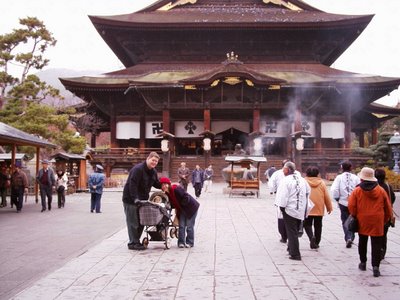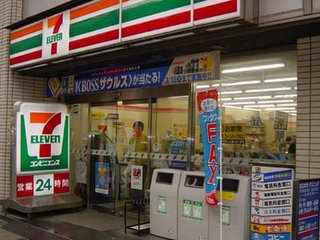
Ammon did not always enjoy bathtime. I think it had something to do with the baths I gave him before I left for Japan. His first bath was supervised by our amazing and patient midwife, Chris Miller, who taught us the do’s and don’ts of giving your baby a bath. After that, with Monica pretty much out of comission after giving birth, bathing Ammon was up to me. Although I was pretty sure of myself in the beginning, I had a lot to learn.
His second bath I bumped the faucet and turned it from warm to scalding. Lesson one: don't bump the faucet.
His third bath I focused too much on washing his bottom, and didn’t notice his head was submerged in the water. Lesson two: baby's safety is more important than a thorough scrubbing.
His fourth bath I tried washing him while he was sitting up, but with his soapy bottom he easily slipped and hit his head. Lesson three: remember lesson two.
These days, bathing is not so much a trial and error experience, but something to be enjoyed. For the last few weeks, Ammon and his daddy bathe together. It started with him sitting on his lap while the tub was filling up, then with the shower on, and finally in the water, playing and trying to mimic dady's goofy songs.

Ammon likes to play with his rubber duckie, splash in the water, and chew on the handle of the scoop-bucket, called te-oke [手桶]. We have a great time, and it is actually bringing back fond memories of me taking baths with my dad when I was 2 and 3 years old.

When Ammon has to bathe alone, he usually takes a dip in the sink. Though his daddy insists they have more fun when the two of them bathe together, Ammon rather enjoys his sink-bath. Whether alone or together, after bathing we dry off and relax in our bathrobes, sometimes posing for pictures.

Most people are not aware of the special bathing culture in Japan. It is not merely a hygenic necessity as it is in the West, but a special relaxation time, and a popular way to socialize (at public baths and hot springs). This is Japan, and there are always special ways of doing things, so before jumping in the tub with your co-workers, you may want to
read up on it. In-home Japanese style baths, O-furo [お風呂], are not at all like the tubs back home. Our O-furo is an electronically controlled automatic model. When we want to take a bath, all we have to do is push a button. It is also in a special room that has a drain, so we can splash in the tub all we want.
 It is the height of hanami, or Cherry-blossom-viewing season in Tokyo, and much of the news coverage as of late has been focused on the best hanami destinations and the foods associated with the tradition. Of course, because the Japanese love their sports, the cherry-blossom footage often ends up spliced with sports coverage. Though the Japanese team won the world league pennant this year, NHK (Japan National Broadcasting) has focused more on the spring sumo tournament. It seems that this being spring, most of the focus has been placed on the rivalry between the ozeki and the current yokozuna, or grand champion. He is a brutish Mongolian called by the name of Asashoryu. He is not very well liked because, as one who holds the highest rank in the very Japanese sport, he is not very Japanese. He is foremost an aggresive athlete, and occasionally breaks form because of it, he also refuses to become any more Japanese than he has to.
It is the height of hanami, or Cherry-blossom-viewing season in Tokyo, and much of the news coverage as of late has been focused on the best hanami destinations and the foods associated with the tradition. Of course, because the Japanese love their sports, the cherry-blossom footage often ends up spliced with sports coverage. Though the Japanese team won the world league pennant this year, NHK (Japan National Broadcasting) has focused more on the spring sumo tournament. It seems that this being spring, most of the focus has been placed on the rivalry between the ozeki and the current yokozuna, or grand champion. He is a brutish Mongolian called by the name of Asashoryu. He is not very well liked because, as one who holds the highest rank in the very Japanese sport, he is not very Japanese. He is foremost an aggresive athlete, and occasionally breaks form because of it, he also refuses to become any more Japanese than he has to.  Living in Japan, one cannot escape the neer millenia of bushido, or the spirit of the Samurai, as it is very alive in the verious aspects of life here. Likewise, the history that is associated with it dominates the national identity.
Living in Japan, one cannot escape the neer millenia of bushido, or the spirit of the Samurai, as it is very alive in the verious aspects of life here. Likewise, the history that is associated with it dominates the national identity. There are many shrines and temples as well. The most famous temple in Nagano is Zenkoji, which supposedly houses the first Buddhist relic to come to Japan. I believe shrines are usually Shinto, and temples Buddhist, though traditions have blended considerably Japan. Mr. Sone, a Japanese teacher of English that I work with, is also a Buddhist priest. His temple is a small one up in the foothills of Matsushiro, and it is only in operation when he is on duty. However, I had the privilage of having a personal tour. It has ornate carvings from single pieces of wood, large murals on the gilt sealings and walls. It was amazing. I was told that it is over 400 years old, and a prefectural teasure.
There are many shrines and temples as well. The most famous temple in Nagano is Zenkoji, which supposedly houses the first Buddhist relic to come to Japan. I believe shrines are usually Shinto, and temples Buddhist, though traditions have blended considerably Japan. Mr. Sone, a Japanese teacher of English that I work with, is also a Buddhist priest. His temple is a small one up in the foothills of Matsushiro, and it is only in operation when he is on duty. However, I had the privilage of having a personal tour. It has ornate carvings from single pieces of wood, large murals on the gilt sealings and walls. It was amazing. I was told that it is over 400 years old, and a prefectural teasure. 
 Standing...
Standing... Dancing!?
Dancing!? 


 When Ammon has to bathe alone, he usually takes a dip in the sink. Though his daddy insists they have more fun when the two of them bathe together, Ammon rather enjoys his sink-bath. Whether alone or together, after bathing we dry off and relax in our bathrobes, sometimes posing for pictures.
When Ammon has to bathe alone, he usually takes a dip in the sink. Though his daddy insists they have more fun when the two of them bathe together, Ammon rather enjoys his sink-bath. Whether alone or together, after bathing we dry off and relax in our bathrobes, sometimes posing for pictures. Most people are not aware of the special bathing culture in Japan. It is not merely a hygenic necessity as it is in the West, but a special relaxation time, and a popular way to socialize (at public baths and hot springs). This is Japan, and there are always special ways of doing things, so before jumping in the tub with your co-workers, you may want to
Most people are not aware of the special bathing culture in Japan. It is not merely a hygenic necessity as it is in the West, but a special relaxation time, and a popular way to socialize (at public baths and hot springs). This is Japan, and there are always special ways of doing things, so before jumping in the tub with your co-workers, you may want to 
 Since 1991,
Since 1991, 
